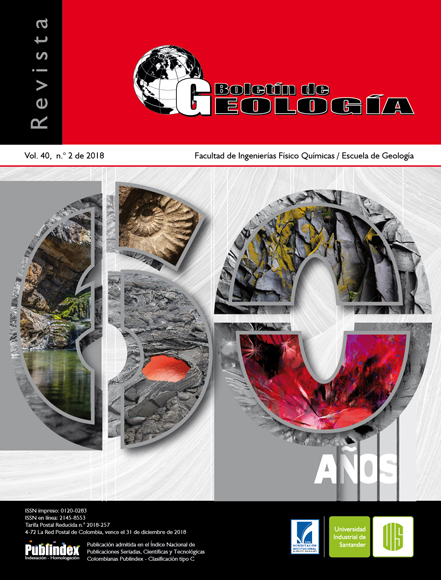Determination of geothecnical properties by using seismic refraction velocities. A case study in Luanda (Angola)
Published 2018-06-05
Keywords
- Seismic refraction,
- SPT,
- Dynamic parameters,
- Geotechnical mapping
How to Cite
Altmetrics
Abstract
Seismic refraction is a prospecting geophysical method, which measures the terrain response in reaction to a P compression wave, mechanically produced at the surface and propagating across. The physical parameter in use, in the case, is the wave propagation velocity, Vp, which travel across the subsurface rock material and reflcts to the surface in function of the material’s density it fids on its way down. That way, indexes associated to the parameter will measure and reveal the geomechanic characteristics of the terrain under study. Those indexes, whilst keeping some correlations with the geological nature of the rock in different horizons, allow to infer also their depths and thickness. The present study has the scope of showing a methodology to map geotechnical parameters using seismic reflction, and it has been noticed that the longitudinal velocities also computed are correlated with penetration resistance values, measured by Standard Penetration Tests (SPT). The dynamic parameters were chosen to be presented in 2D maps, in order to give either, a better representation of their characteristics, as well to allow for a continuous geotechnical interpretation over the entire area of study. The latter, is an area of silty/sandy soils located in the city of Luanda (Angola).
Downloads
References
ASTM D5777-95. 1999. Standard Guide for Using the Seismic Refraction Method for Subsurface Investigation.
Humire, F., Sáez, E., y Leyton, F. (2015). Manual de aplicación de técnicas geofísicas basadas en ondas de superfiie para la determinación del parámetro VS30. Santiago de Chile: Instituto de la Construcción.
Lankston, R.W. (1989). The seismic refraction method: A viable tool for mapping shallow targets into the 1990s. Geophysics, 54, 1535-1542.
Luna, R., and Jadi, H. (2000). Determination of dynamic soil properties using geophysical methods. First International Conference on the Application of Geophysical and NDT Methodologies to Transportation Facilities and Infrastructure. St. Louis, USA.
Nabil, H.A., and Al-Heety, A.J. (2014). Seismic refraction tomography and MASW survey for geotechnical evaluation of soil for the teaching hospital project at Mosul University. Journal of Zankoy Sulaimani- Part A, 16(1), 1-14. doi: 10.17656/jzs.10279.
Naranjo, H., y Dranichnikov, T. (2012). Cálculo de capacidad portante basado en geofísica y método convencional. El caso del puente sobre o rio Maicito. Quito: Universidad Politécnica Salesiana.
Sacasas, C. (2012). Sísmica Somera. Notas de Clases. Cujae. La Habana.
Tecnasol. (2007). Edifiio No Projecto Nova Vida Luanda – Angola Prospecção GeológicoGeotécnica Nota Técnica, Luanda, Dezembro de 2007.
Teixeira Pires, G.J.P. (2006). Caracterização geológica e geotécnica dos solos de Luanda para o ordenamento do território. Tese de Mestrado, Departamento de Geología, Universidade de Lisboa, Portugal.

